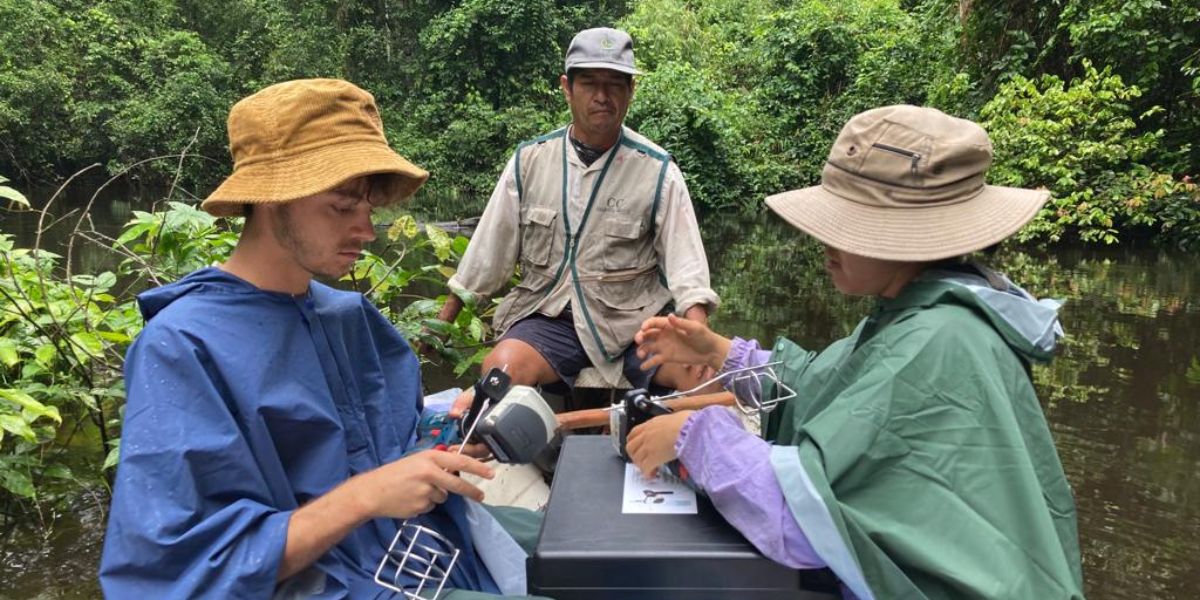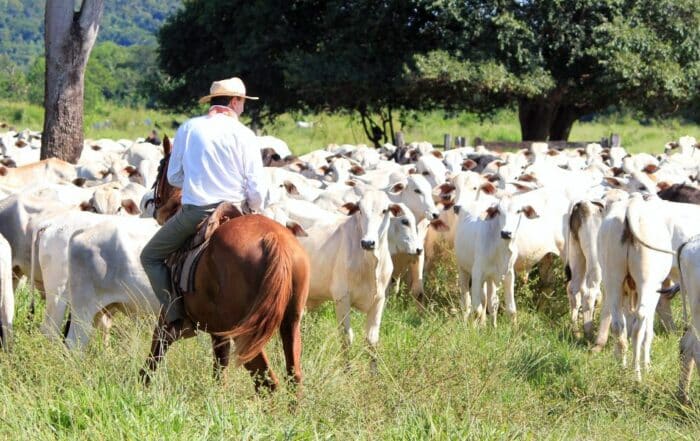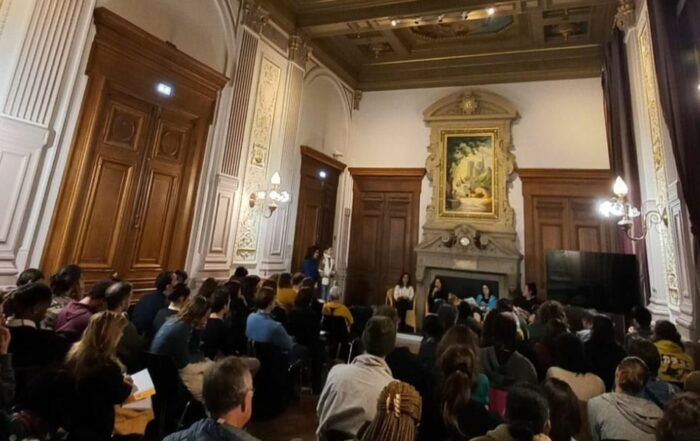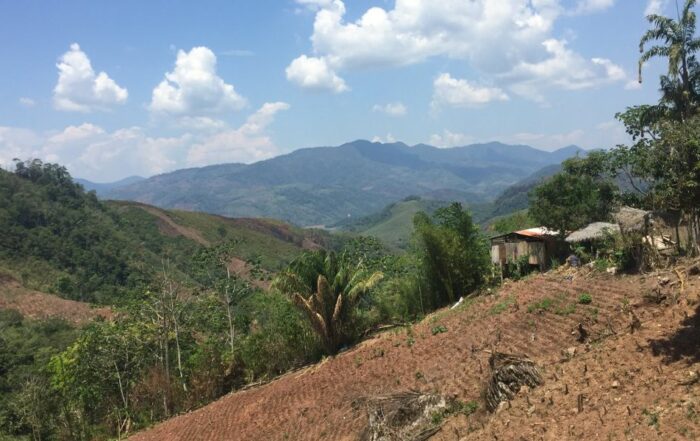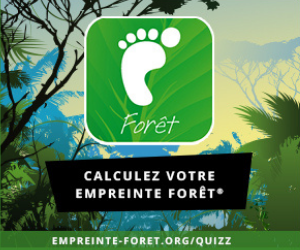The Amazon rainforest, one of the richest and most precious ecosystems on the planet, continues to reveal its secrets. Thanks to major technological advances in matters of biodiversity preservation, a recent scientific expedition highlighted the extraordinary diversity of the Yanayacu Maquia conservation concession in Peru. This area is home to some of the most emblematic and rare species of the Amazon rainforest’s. The biodiversity of Yanayacu Maquia is a natural treasure whose importance remains underestimated. However, a collaboration between Envol Vert, Biodiversité Amazonienne and SPYGEN recently led to an expedition that greatly improved our knowledge of this exceptional ecosystem.
At the heart of the expedition was the revolutionary use of environmental DNA (eDNA). This innovative technology has enabled us to collect crucial data on the biodiversity of Yanayacu Maquia, by tracking the DNA traces left by living beings in their natural habitat. The team undertook this audacious mission by venturing into the most remote corners of the concession, including one of the largest peat bogs in the Amazon.
The expedition took place over six days instead of the four initially planned, due to the unpredictable conditions of access to the forest. The route is sometimes fraught with pitfalls, branches and trunks in the middle of the river thus blocking the access. The latter have to be cut down with a machete to be able to get through, or it’s needed to get out of the canoe and pull them over for a long distance. These hazards did not deter the team from their mission. Challenges included heavy rains and unexpected encounters with trespassers who had entered the concession illegally. Despite these difficulties, the team persevered and succeeded in collecting eDNA samples from various natural habitats, including rivers, ponds and wetlands.
The results of the eDNA analyses were astonishing. From just 12 sampling sites, a total of 388 taxa were inventoried , of which 163 were precisely identified to species level, while 225 were classified to genus or family level due to gaps in genetic reference bases. These figures include an astonishing diversity of mammals, amphibians, birds, reptiles and fish.
These discoveries reinforce the importance of preserving the Yanayacu Maquia concession. No fewer than ten of the species identified are on the International Union for Conservation of Nature (IUCN) red list. Of these, the giant otter (Pteronura brasiliensis) is the most threatened, being classified as “endangered”. It is closely followed by the jaguar (Panthera onca), classified as “near-threatened”. Other species, such as the bald uakari (Cacajao calvus), Nancy Ma’s night monkey (Aotus Nancymaae), The common woolly monkey (Lagothrix lagotricha), the tapir (Tapirus terrestris), the white-lipped peccary (Tayassu pecari), the giant anteater (Myrmecophaga tridactyla), and The yellow-footed tortoise (Chelonoidis denticulatus) are considered “vulnerable”. Other emblematic species, such as the hoazin (Opisthocomus hoazin) and the ocellate river stingray (Potamotrygon motoro) have also been recorded. In particular, 20 distinct species of bat were counted, as well as 15 species of tree frog and 2 species of glass frog. In addition, given the lack of reference data, a large number of taxa identified to genus or family represent potentially as many species with high conservation stakes. Such a concentration of diverse populations is considerable.
“eDNA makes it possible to take stock of global biodiversity, and can reveal the presence of elusive species or those more difficult to observe by other means. With conventional methods, a lot of time and effort would have been needed to gather as much data as this campaign has generated, without guaranteeing an equivalent result”, says Pierre Jorcin, Project Manager at SPYGEN.
It should be noted that the ranges of many of these species are still poorly known, as very few precise observations have been made in this region. This initiative has shed new light on the richness of Amazonian biodiversity.
“This expedition demonstrates the crucial importance of preserving these natural areas and the contribution of science to better understand and protect these fragile ecosystems. It is imperative to continue exploring and protecting these natural gems for future generations.” Lotty Morey, President and Founder of Amazon Biodiversity.
eDNA is proving to be an invaluable tool for the study and conservation of forest environments such as the Yanayacu Maquia concession in Peru. The results of the mission were shared with local communities through participatory activities focused on raising awareness of the ecological issues associated with preserving wildlife and natural habitats.
“Project participants were very enthusiastic during the explanation of the eDNA analysis results. Large posters with photos of the species helped them learn the scientific name, understand that some species are threatened, and that they need to be protected. Games were also played with the children on the theme of biodiversity, to help them understand their role in the food chain and biological balance,” explains Marion Imbert, Envol Vert’s Peru Manager.
This innovative project could serve as a model for regular, long-term monitoring of Amazon ecosystems.
The Amazon rainforest, one of the richest and most precious ecosystems on the planet, continues to reveal its secrets. Thanks to major technological advances in matters of biodiversity preservation, a recent scientific expedition highlighted the extraordinary diversity of the Yanayacu Maquia conservation concession in Peru. This area is home to some of the most emblematic and rare species of the Amazon rainforest’s. The biodiversity of Yanayacu Maquia is a natural treasure whose importance remains underestimated. However, a collaboration between Envol Vert, Biodiversité Amazonienne and SPYGEN recently led to an expedition that greatly improved our knowledge of this exceptional ecosystem.
At the heart of the expedition was the revolutionary use of environmental DNA (eDNA). This innovative technology has enabled us to collect crucial data on the biodiversity of Yanayacu Maquia, by tracking the DNA traces left by living beings in their natural habitat. The team undertook this audacious mission by venturing into the most remote corners of the concession, including one of the largest peat bogs in the Amazon.
The expedition took place over six days instead of the four initially planned, due to the unpredictable conditions of access to the forest. The route is sometimes fraught with pitfalls, branches and trunks in the middle of the river thus blocking the access. The latter have to be cut down with a machete to be able to get through, or it’s needed to get out of the canoe and pull them over for a long distance. These hazards did not deter the team from their mission. Challenges included heavy rains and unexpected encounters with trespassers who had entered the concession illegally. Despite these difficulties, the team persevered and succeeded in collecting eDNA samples from various natural habitats, including rivers, ponds and wetlands.
The results of the eDNA analyses were astonishing. From just 12 sampling sites, a total of 388 taxa were inventoried , of which 163 were precisely identified to species level, while 225 were classified to genus or family level due to gaps in genetic reference bases. These figures include an astonishing diversity of mammals, amphibians, birds, reptiles and fish.
These discoveries reinforce the importance of preserving the Yanayacu Maquia concession. No fewer than ten of the species identified are on the International Union for Conservation of Nature (IUCN) red list. Of these, the giant otter (Pteronura brasiliensis) is the most threatened, being classified as “endangered”. It is closely followed by the jaguar (Panthera onca), classified as “near-threatened”. Other species, such as the bald uakari (Cacajao calvus), Nancy Ma’s night monkey (Aotus Nancymaae), The common woolly monkey (Lagothrix lagotricha), the tapir (Tapirus terrestris), the white-lipped peccary (Tayassu pecari), the giant anteater (Myrmecophaga tridactyla), and The yellow-footed tortoise (Chelonoidis denticulatus) are considered “vulnerable”. Other emblematic species, such as the hoazin (Opisthocomus hoazin) and the ocellate river stingray (Potamotrygon motoro) have also been recorded. In particular, 20 distinct species of bat were counted, as well as 15 species of tree frog and 2 species of glass frog. In addition, given the lack of reference data, a large number of taxa identified to genus or family represent potentially as many species with high conservation stakes. Such a concentration of diverse populations is considerable.
“eDNA makes it possible to take stock of global biodiversity, and can reveal the presence of elusive species or those more difficult to observe by other means. With conventional methods, a lot of time and effort would have been needed to gather as much data as this campaign has generated, without guaranteeing an equivalent result”, says Pierre Jorcin, Project Manager at SPYGEN.
It should be noted that the ranges of many of these species are still poorly known, as very few precise observations have been made in this region. This initiative has shed new light on the richness of Amazonian biodiversity.
“This expedition demonstrates the crucial importance of preserving these natural areas and the contribution of science to better understand and protect these fragile ecosystems. It is imperative to continue exploring and protecting these natural gems for future generations.” Lotty Morey, President and Founder of Amazon Biodiversity.
eDNA is proving to be an invaluable tool for the study and conservation of forest environments such as the Yanayacu Maquia concession in Peru. The results of the mission were shared with local communities through participatory activities focused on raising awareness of the ecological issues associated with preserving wildlife and natural habitats.
“Project participants were very enthusiastic during the explanation of the eDNA analysis results. Large posters with photos of the species helped them learn the scientific name, understand that some species are threatened, and that they need to be protected. Games were also played with the children on the theme of biodiversity, to help them understand their role in the food chain and biological balance,” explains Marion Imbert, Envol Vert’s Peru Manager.
This innovative project could serve as a model for regular, long-term monitoring of Amazon ecosystems.

